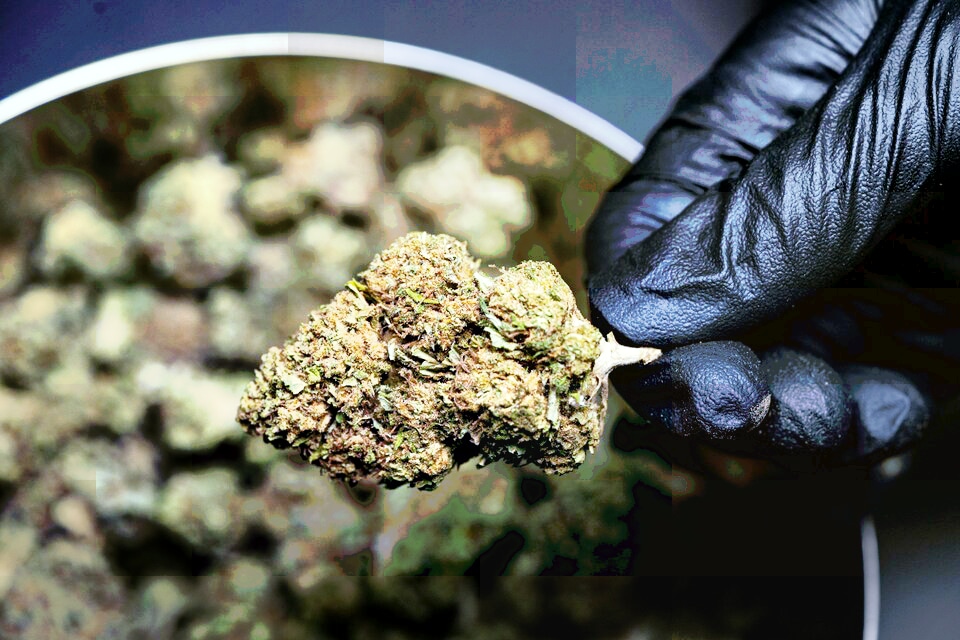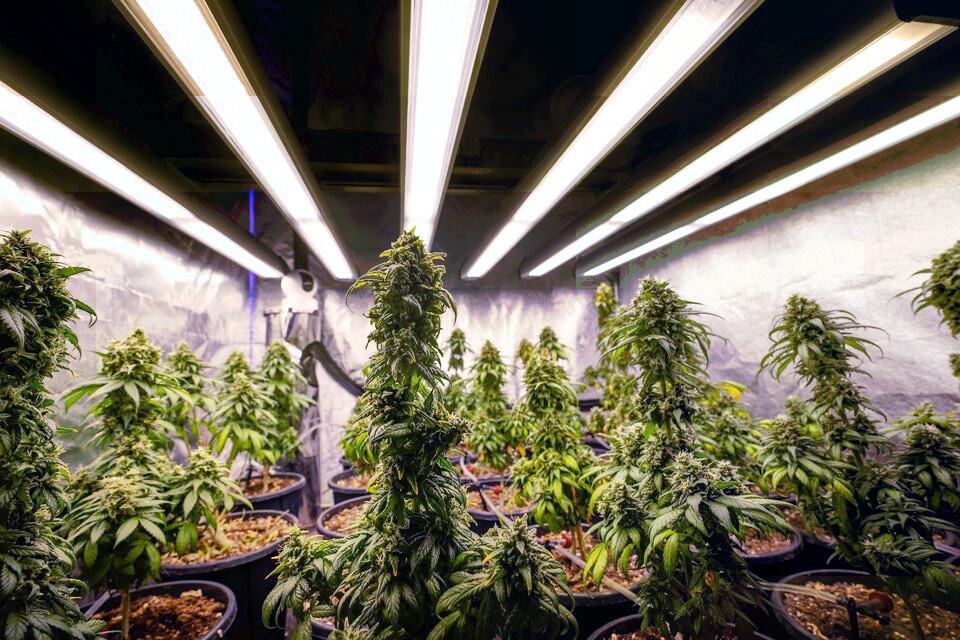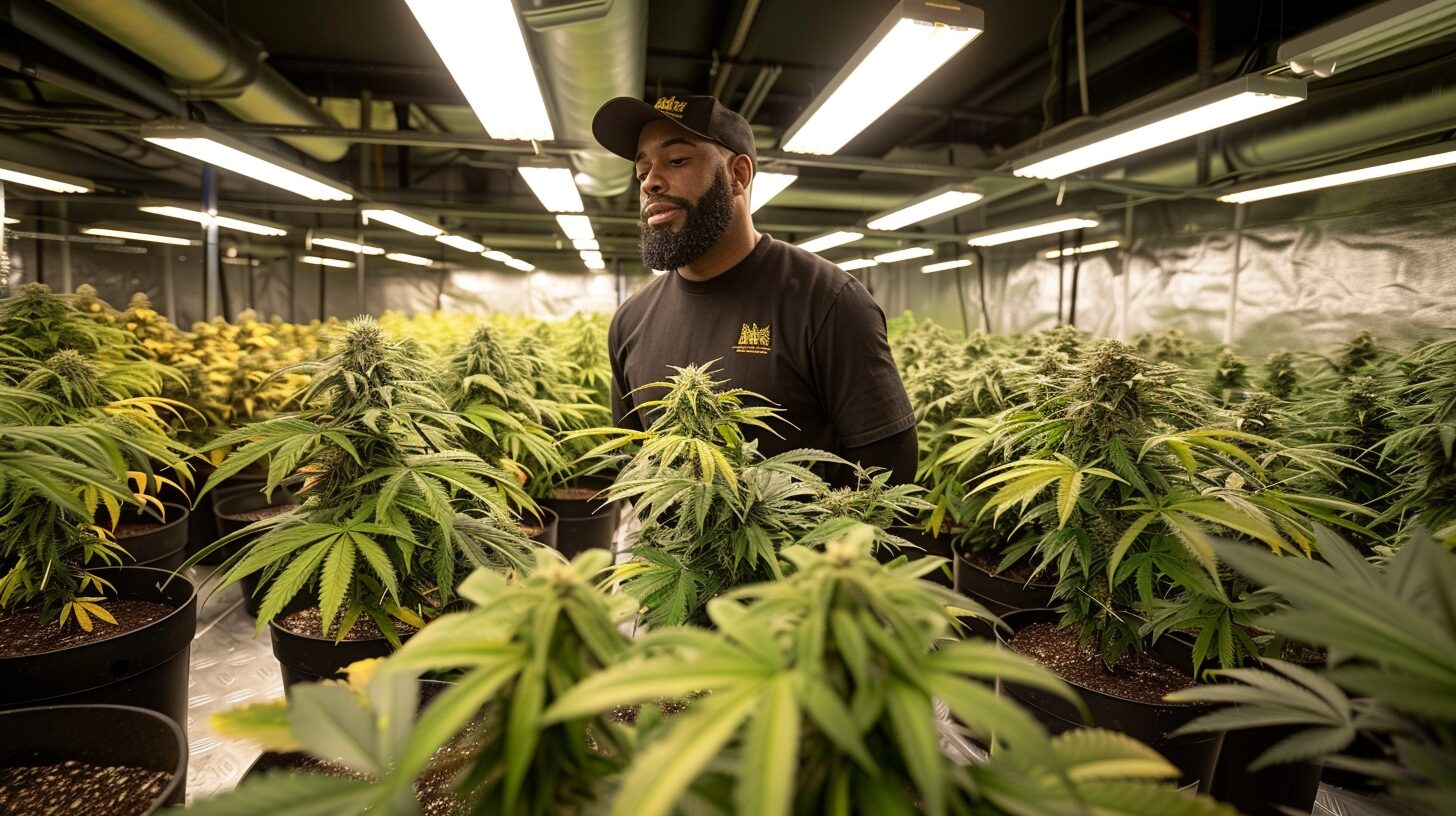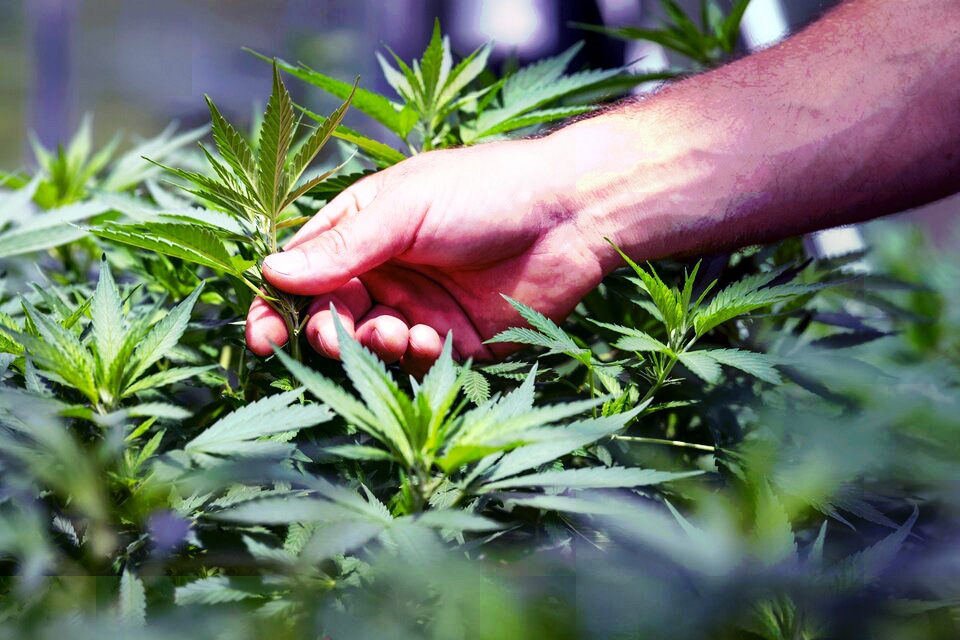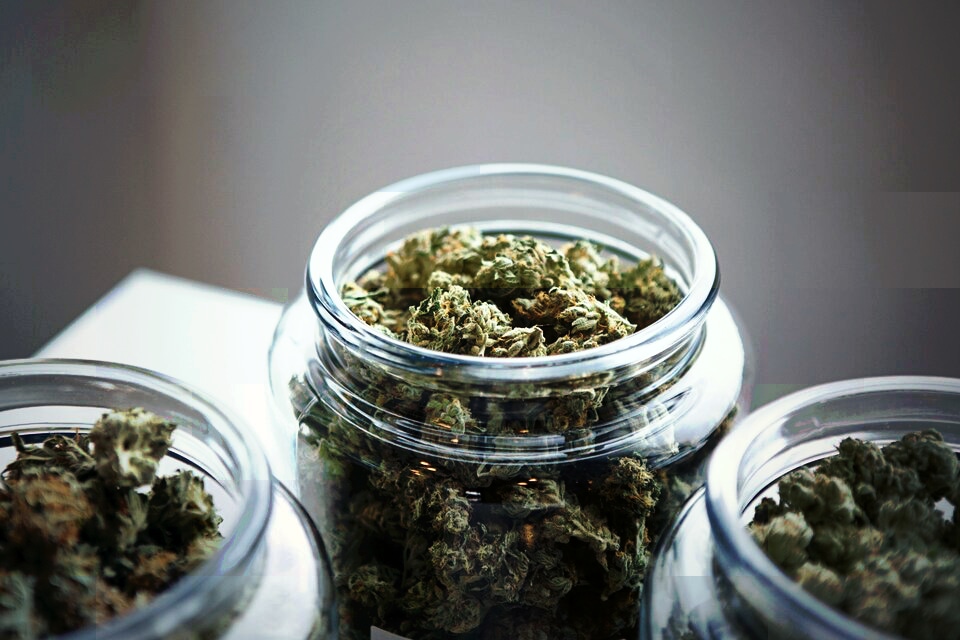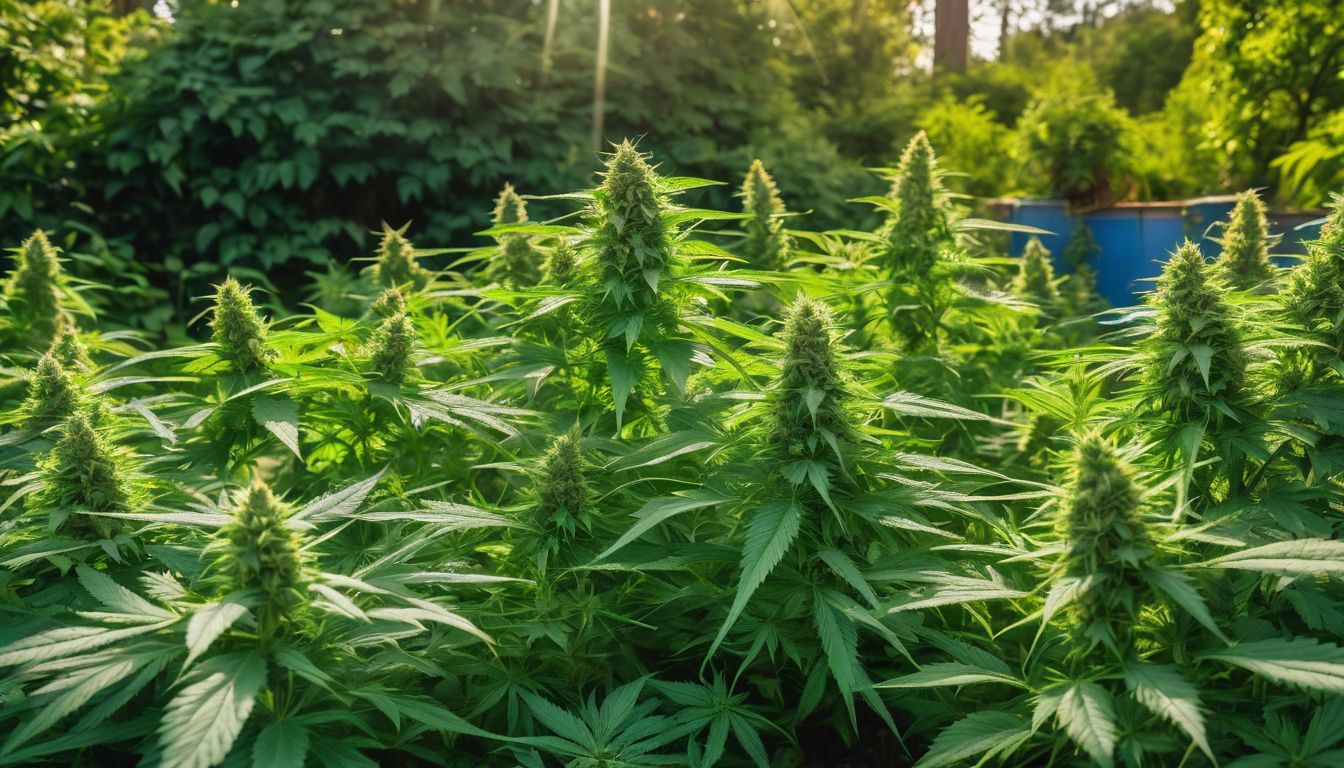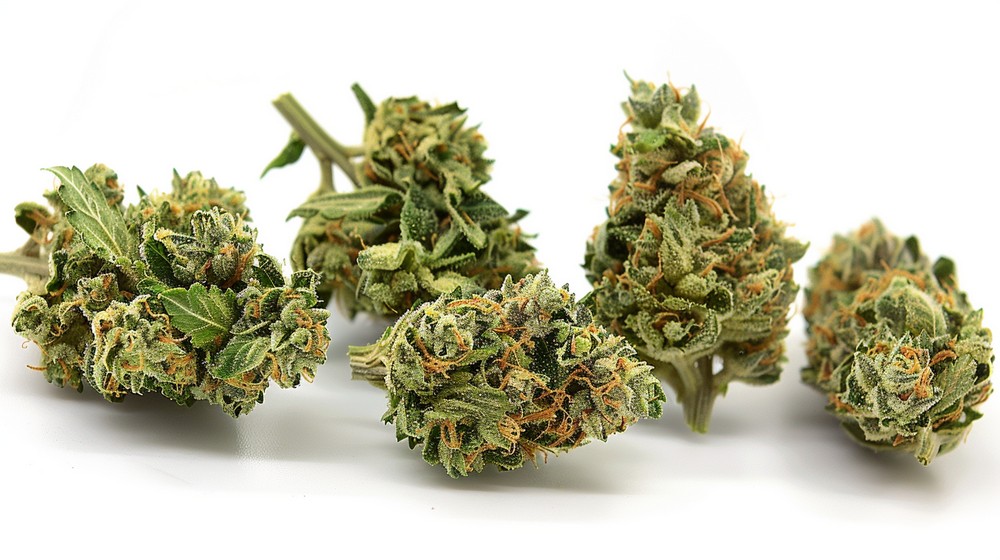Guia completo para a lavagem de raízes da cannabis
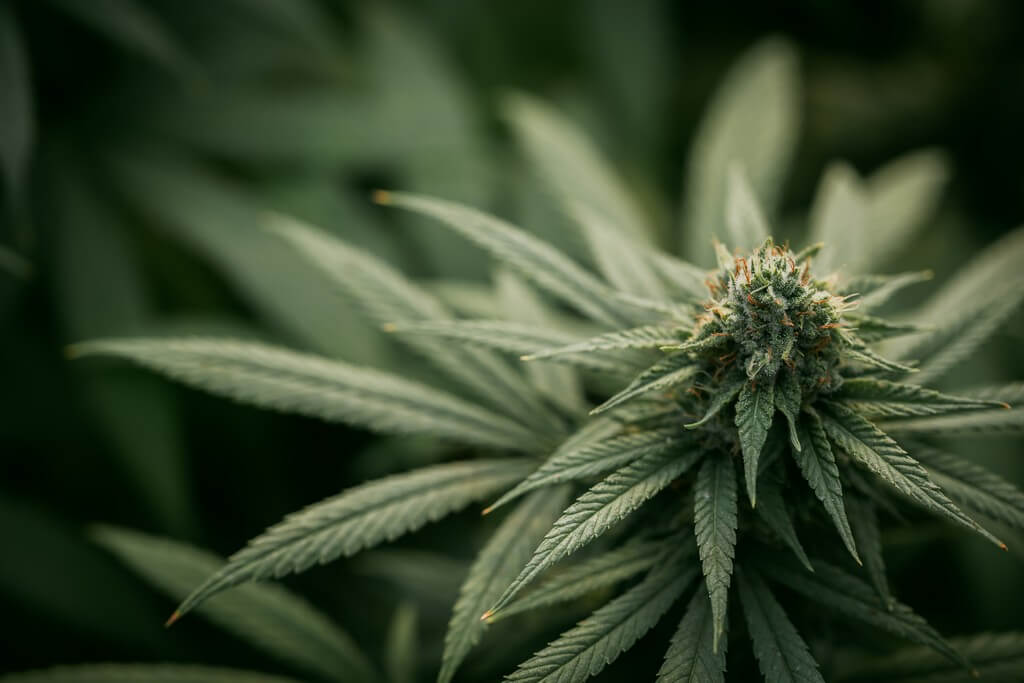
If you’re growing marijuana, you’ll know that excess nutrients can be a real headache. (This is where something called ‘flush’, or root washing, comes into play, right before harvest.) This process is key to ensuring optimal quality of your buds, eliminating unwanted build-up.
In this article, I’ll guide you through when and how to perform an effective flush, thus improving the flavor and smoothness of the final product. Keep reading and discover how to transform your plants to get the best possible harvest!
Key takeaways
- Flushing is done by passing water through the roots of marijuana plants to remove accumulated nutrients.
- It’s important to start flushing about two weeks before harvest to improve the flavor and smoothness of the buds.
- Use pH-balanced water and observe the runoff water when watering to know if the flush is working well.
- Enzymes during the flush help plants get rid of excess nutrients more easily.
- Flushing isn’t always necessary, especially if you use organic soil or natural nutrients.
What is Flushing in Marijuana Plants?
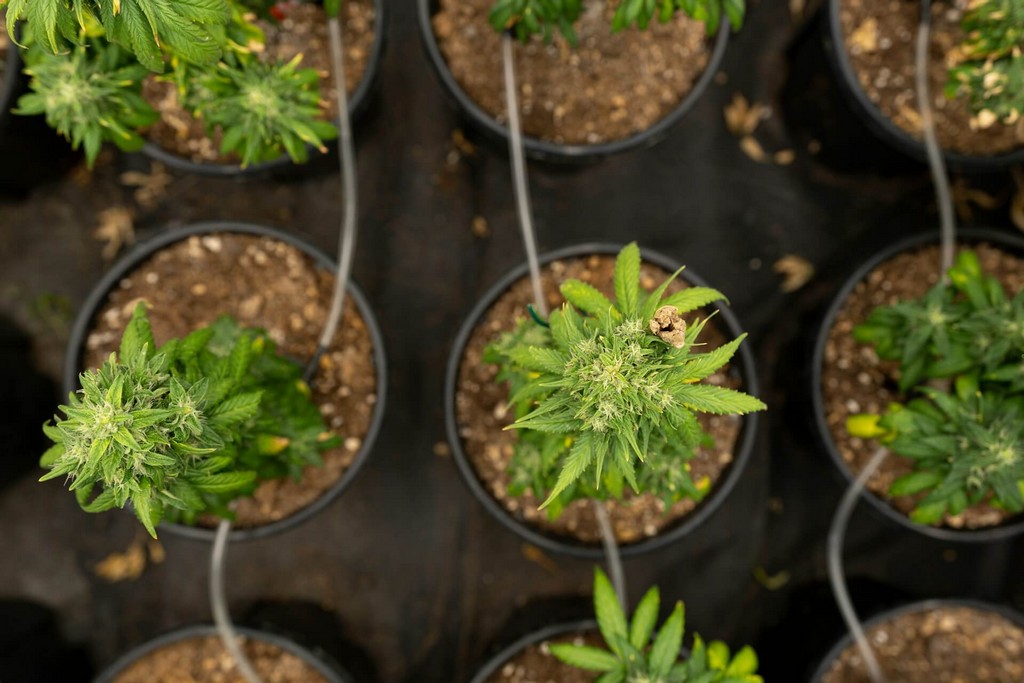 marijuana plant roots being rinsed with water in a lush garden setting.” title=”A photo of healthy marijuana plant roots being rinsed with water in a lush garden setting.” class=”awimage” />
marijuana plant roots being rinsed with water in a lush garden setting.” title=”A photo of healthy marijuana plant roots being rinsed with water in a lush garden setting.” class=”awimage” />
Flushing is like giving your marijuana plant roots a shower. It consists of passing a lot of water through the soil or substrate where they grow. This helps remove accumulated nutrients and salts.
Think of it as cleaning the plant from the inside before harvesting its fruits.
Doing a flush correctly means the flowers will be better to smoke. The plants will only absorb water, without more food, and this makes the buds purer and smoother.
Imagine smoking something that tastes clean and natural! That’s why many growers place great importance on the flushing moment before harvest.
Why is Flushing necessary?
After understanding what flushing is, let’s see why your marijuana plants need it. Plants absorb nutrients from the soil, but over time, they can accumulate too much.
This can damage the plants, causing nutrient burn or blockages that prevent them from absorbing more food. Imagine how you would feel if you only ate burgers all the time; your body would ask for a break and something healthier.
The same happens with plants.
Flushing helps clean out those excesses before harvest. Like washing vegetables before eating them, you want your cannabis to be pure and chemical-free. Additionally, it helps improve flavor and make the smoke smoother.
Think of flushing as preparing your plant to give its best when it’s time to enjoy it.
How to Flush Marijuana Plants Correctly
I’ll let you in on a little secret, fellow grower: doing a flush correctly is like giving that perfect massage to your marijuana plants right before they give their best—here I’ll teach you how to pamper them to obtain those dreamy buds.
Step 1: Monitor the Plant’s Life Cycle
It all starts with observing your cannabis plants closely. This is key. You need to know how they look and feel at each stage, from seed to flower. Oh, and you have to mark your calendar.
If your plant is going to flower for 8 weeks, you have to think about doing a flush when that time comes. That’s about two weeks before cutting them for harvest. Come on, if you pay attention, you’ll notice that the leaves are telling you something.
They might be yellow or strange because maybe they have too much food accumulated. That’s precisely the moment to act and give them a good root washing.
Step 2: Prepare the Water
It’s time to talk about water, that vital part for happy plants! For a successful flush, the water must be just right. Think of water as a refreshing shower for your marijuana plants.
You need it to be clean and balanced. Using water with the correct pH ensures that your plants can get rid of excess nutrients without stress.
Now, imagine you’re cooking a special meal; that’s how you should treat preparing the water for your plants. Control both the pH and PPM (parts per million) well, because they are key in this step.
If you don’t have a meter, it might be a good idea to get one. The plants will thank you greatly when harvest time comes. Get to work and adjust those levels!
Step 3: Perform the Flush
Now it’s time to give your marijuana plants a good bath. Fill the pot with pH-balanced water, making sure it’s enough for the water to come out the bottom. This helps flush out all those accumulated nutrients and clean the soil well.
You’re going to want to do this carefully, moving the water slowly over the soil so all the soil can absorb it. Think of it as rinsing a dirty sponge; little by little, the clean water carries the impurities out.
It’s like giving your plants a refreshing shower before their big day!
Step 4: Monitor the Runoff
It’s key to keep an eye on the water coming out of your plants after watering. This is called “runoff” and it helps you see if you’ve done the flush well. If there are a lot of strange things in that water, the roots may still have nutrients we don’t want.
So, look at the color and smell the water that escapes.
You have to be like a detective with your plants. Yes! Observe the runoff and take note of what you see. Does the water look clean or is it dark? Clearer water means a good flush.
But if you see that the water is coming out very dirty, you may have to continue the flush a bit more. But be careful not to overdo it with watering! Too much water is not good for your plant friends.
Step 5: Continue with Regular Care
After doing the flush, your marijuana plants still need love. You continue caring for them as always. That means giving them water with the balanced pH and keeping them in a good place where they can receive the light they need.
You’ll continue to watch them to see if they have any problems like nutrient deficiencies or excesses. If you use organic soil or super soil, this step is even easier because these soils help plants stay strong and healthy.
During these days, pay attention to the water coming out of your plants, the runoff. This way you can know if they are taking in nutrients well. The plants will show you how they feel.
If the leaves look happy and green, you’re on the right track. Keep it up until it’s time to harvest your soft and tasty buds. Your efforts will be worth it!
Step 6: Harvest
It’s time to cut your marijuana plants. You’ve worked hard and followed all the steps to get to this point. Use very sharp scissors and clean the branches, one by one. Remember, the root flush should have been done two weeks before so that now the harvest has better flavor and smoothness when smoking.
Cut the branches and clear the large and small leaves that don’t have trichomes. This helps the buds dry well. Make sure to hang them in a cool, dark place for drying.
Now, get ready for the next step and keep those perfect buds!
The Best Time to Flush your Cannabis
Root flushing is key for your plants to give their best. I’ll tell you how to know the perfect time to start.
– Check your cannabis plants’ flowering cycle. If they last 8 weeks, start the flush on the sixth.
– Observe the trichomes with a magnifying glass. When they are milky and some amber, it’s time to act.
– Pay attention to the leaves. If they start to naturally yellow, it could be the signal for a flush.
– Don’t wait to see damage from excess nutrients. Preventing is always better than fixing problems.
– Listen to your plant. Each one is unique and will tell you when it needs a break from nutrients.
Now that you know when to do a flush, let’s move on to the importance of enzymes during this process.
The Importance of Enzymes during the Flush
After deciding the best time to perform the flush, it’s crucial to talk about enzymes. These little helpers make plants absorb nutrients better. During the flush, they act like scissors, cutting large nutrients into smaller parts.
This helps the plant’s roots grab what they need and let go of the rest. Without enzymes, plants would have difficulty getting rid of excess nutrients.
Enzymes also help keep roots healthy. In a good flush, they act by cleaning up everything left over in the soil and roots. Think of them as a cleaning crew that takes away the bad and leaves only the good.
This way, your marijuana plants can grow strong and produce very tasty buds. Don’t forget those little enzymatic friends; they are essential for a successful grow.
When to Avoid Flushing your Plants?
There are times when it’s not good to do a root flush. Here we tell you in which cases you should avoid it:.
– If you use natural nutrients instead of chemicals.
– Don’t ‘flush’ if your plants look healthy and without excess food.
– It’s a bad idea to do it when the plants are young and still growing.
– If you have everything under control and there’s not a lot of accumulated salt, it’s better not to do it.
– Use good irrigation water that doesn’t have a lot of salts or minerals to avoid needing a ‘flush’.
– Avoid ‘flushing’ when growing in organic soil that generally doesn’t store salts.
Is Flushing really necessary?
After thinking about when not to do a flush, consider if you should do it. There are people who doubt flushing. Here are some important points:.
– Some believe flushing helps plants consume remaining nutrients, improving flavor.
– Others say there’s no difference and it’s an extra step with no benefit.
– Flushing can reduce the risk of nutrient burn at the end of the life cycle.
– If plants have a nutrient blockage, flushing could help solve it.
– Marijuana grown without chemicals may not need flushing, but it depends on the soil and other factors.
– Experts say pH-balanced water is crucial during flushing to avoid problems.
– Those against flushing argue it can stress the plants and affect the harvest.
– Each grower has different methods, and flushing use is sometimes based on personal preferences.
– The decision to flush or not depends on the results each person wants to achieve.
In the end, the grower must observe and decide if flushing is best for their plants.
How to Flush Hydroponic Plants
Flushing hydroponic plants cleans the roots. All extra nutrients are removed so the plant is healthy.
- Empty the hydroponic system and make sure no old nutrients remain.
- Fill with pure, pH-balanced water. This helps plants not have problems with their food.
- Wait a bit for the new water to wash the roots well.
- Check the water coming out. If it still has a lot of nutrients, it may be necessary to add more pure water.
- Check the pH and water quality several times while flushing. It’s important to keep everything in order.
- After finishing, return to the normal care plan until it’s time to harvest.
The result of Flushing your Cannabis
After learning how to flush hydroponic plants, let’s look at the results you can expect in your cannabis.
– Buds may taste better and burn cleaner.
– The marijuana may have a more natural flavor without strange tastes.
– Extra nutrients are removed with water, which can make buds less dense.
– Some people believe flushing makes the smoking experience smoother.
– Your plants may have fewer problems like “nutrient burn” or “nutrient lockout”.
– Performing a flush can help prevent “nutrient build-up” in the soil or hydroponic system.
– Experts say root flushing before cutting helps improve the overall quality of the final product.
The Flush Debate: Is it necessary?
Many growers wonder if they have to flush their marijuana plants. They say removing nutrients before harvest improves the flavor and smoothness of the final product.
But is this always the case? Some think it’s not necessary and their plants are perfect without that extra step.
Everyone has their style for caring for their cannabis plants. Those in favor of flushing believe it helps prevent nutrient deficiencies and that buds turn out better. Those against it say their plants take what they need from the organic soil.
The truth is, you can’t say who’s right without considering each unique situation. The important thing is to know your plants well and how they react to flushing to make the best decision.
Flushing before Harvest for Smoother Buds
To get smoother buds, it’s key to do a flush before cutting your plants. The flush helps plants use the last nutrients and improves flavor.
– Choose the right time: Flush about 14 days before harvest.
– Use pH-balanced water: This ensures nutrients are washed out well.
– Water until you see runoff: This cleans excess nutrients from the soil or growing medium.
– Examine the water coming out: It should have fewer fertilizers or nutrients.
– See how your plants react: They should remain healthy and ready for harvest.
– Cut when they’re ready: After the flush and right at the end of the flowering cycle.
How to water and Flush Marijuana plants
Let’s discover together the art of watering and flushing our marijuana plants, a key technique that could be the difference between a “meh” bud and one that really impresses your senses..
keep reading to become a true master of cannabis hydration!
How often should Marijuana plants be watered?
For marijuana plants, water is life, but each plant needs its own “straw”. In the growth phase, water them every 2 or 3 days. If they are young seedlings, once every 3 to 7 days is good.
Be careful not to drown them; roots love oxygen too. Give them just the right amount of water, not too much or too little, so they grow strong.
Keep your eyes open to see if they ask for more or less water. Droopy or sad leaves tell you “give me water”. But if the leaves look fat and heavy, like the soil, then they already have too much.
It’s an art to know how to water your marijuana plants — but with practice, you’ll be a master.
How much water do Marijuana plants need?
Now that we know how often to water, let’s talk about how much water to use. Small plants need less, like 0.25L per watering. But watch out, not all plants are the same. A large plant may ask for up to 3L of water.
It’s like us, right? A baby doesn’t eat the same as an adult.
To make sure, always look at the soil. If it feels dry a few centimeters down, it’s time to give your plant water. And don’t forget, the water should be at the right pH point and without bad chemicals so the plant can eat nutrients well.
This way it will grow happy and strong!
Flushing Marijuana Plants before Harvest
Flushing is key to having an excellent harvest. It removes leftover nutrients and improves flavor.
– Start two weeks before cutting the plants to ensure the roots are cleaned well.
– Use only nutrient-free water, so plants start consuming what they’ve stored.
– Fill the tub and use the shower to pour water on your plants until the water comes out clean.
– Make sure the water has a balanced pH; this helps not damage the roots.
– Watch the water coming out of the pot, it should be clear as a sign that the flush is working.
– Check that the pot size is appropriate, as this affects how long you should flush.
– If you used mineral nutrients, it’s very important to do this step to ensure a good harvest.
– Give your plants time to recover after the flush before proceeding with the harvest.
When to stop watering before Harvest?
Stopping watering marijuana plants before harvesting helps dry them out. Here’s how to do it:.
– Start with the root flush two weeks before the expected harvest date.
– Let the plant use all the water in its soil during the last days.
– Stop watering one or two days before harvest. This will make the roots look for the last nutrients.
– Check that the leaves start to show a slight wilting. It means the plant is almost ready.
– Feel the weight of the pot. If it’s light, it means there’s almost no water left.
– Look at how the buds and leaves appear. They should look ready to cut without being wet.
Flushing Marijuana Plants for Nutrient Imbalance or Lockout
Root flushing can solve nutrient problems in your plants. Here’s how to do it step by step.
– Check the soil pH before starting. This will tell you if you need to adjust anything for the plants.
– Use pH-balanced water to avoid more problems. The right water helps roots recover better.
– Give your plants only water, without nutrients, for one or two waterings. This way the roots are cleaned well.
– Wait and see how the plants react to the flush. Sometimes they improve quickly, other times it takes a while.
– Measure the water coming out of the pot. The runoff water should have a pH similar to the water you used for watering.
– If you notice the plants are still doing poorly, repeat the flush in a few days. Give the plants time to recover.
– When you do a flush for lockout, don’t overdo it. Too much water can also harm the plants.
Now that you know how to use flushing to fix nutrient imbalances, let’s look at how to choose the best water for your marijuana plants.
How to get the Best Water for Marijuana Plants
Understanding water quality is like discovering a new superpower for your marijuana plants; with balanced pH and the correct concentration of minerals, you’ll see how your green friends thank you with each new leaf..
and that’s just the beginning of how water can work magic in your grow!
Know its pH and PPM
Water with the balanced pH is key for your marijuana plants. If the pH isn’t between 5.5 and 7.0, your plants may not eat well. Imagine pH as a key that opens the door to food for your plants.
If the key doesn’t fit, the doors close and the plant stays hungry.
PPM, or parts per million, also count a lot. It’s like knowing how many vitamins are in your plant’s food. During growth, marijuana plants want different amounts.
At first, they need less, between 500-600 PPM. Then, when they grow more and are ready to flower, they like to have around 1000-1100 PPM. With these numbers in mind, you can give them just what they need to be strong and healthy.
Where to get water for your cannabis garden?
For your cannabis garden, you can use untreated tap water. Although it sounds strange, yes! This water usually has the pH and minerals that plants need. But not all tap water is the same.
You should know the pH and PPM levels to make sure it’s the best for your plants. If you have doubts, you can collect rainwater or buy reverse osmosis (RO) systems. These systems clean the water and remove things we don’t want.
You can also think about water collection systems. This means gathering water when it rains and using it later. Or if you prefer something simpler, you can opt for bottled water, although it could be more expensive.
The important thing is to make sure the water is good for your cannabis and doesn’t have bad things for the plants.
Now that you know how to get water, let’s talk about the next step: “Unfiltered tap water”.
Unfiltered tap water
Tap water is easy to get but watch out, sometimes it’s not the best for your marijuana plants. It’s because it often brings many minerals that don’t go well with them. If you water them just as it comes out of the tap, you could have problems.
The plants may not take in nutrients well and that’s not what you want.
Use water that’s clean of those extra minerals. Filtering it is a good idea. That way you make sure you’re giving your plants what they need and nothing else. And when we talk about taking care of your marijuana plants so they grow strong and healthy, water plays a super important role, so don’t take risks!
Water collection systems
Moving on from unfiltered tap water, there’s another great option for your marijuana plants: collecting rainwater. Setting up a collection system is easy and gives you super quality water.
Rain is free and plants love it because it doesn’t have extra things like chlorine or hard minerals. You just put a barrel or tank under your roof and boom!—every time it rains, you save water for your plants.
This helps a lot, especially when you want to give your plants something pure and natural. Plus, you don’t spend money on bottled water or expensive filters.
Bottled water
After looking at water collection systems, you might wonder about bottled water. This is a popular option for marijuana plants. It provides clean water without bad things that can harm your plants.
If you use bottled water, check that it doesn’t have strange little things that affect your plants. Also, make sure it’s at room temperature to avoid problems.
Choose bottled water with the correct pH for your marijuana plants. This helps the plants absorb nutrients well. Bottled water without chlorine or heavy minerals can make your plants grow strong and healthy.
So, if you don’t have another source of good water, bottled water could be your best friend in growing.
Reverse osmosis (RO) systems
Reverse osmosis systems are great for cleaning the water your marijuana plants are going to drink. Think of it as a magic filter that removes bad things like chlorine and leaves the water perfect.
With this clean water, you can control well what nutrients you give your plants. It’s like cooking for a friend and knowing exactly what they like to eat.
Using an RO system means you don’t have to worry about dirty or very acidic water. Your plants will be happier because you give them pure water and that can help them grow strong.
Now, let’s talk about how to preserve your buds after cutting them with cool methods like freeze-drying.
Post-Harvest Preservation Methods: Freeze-Drying Weed
Drying and curing marijuana with the freeze-drying method is something new and exciting. This process is done in three steps: first, the flowers are frozen until they are very cold.
Then, the water in them turns into gas without going through liquid, that’s called sublimation. At the end, the remaining water is removed so the plant is nice and dry. By doing all this, the marijuana flowers can be ready to sell in just 24 hours.
Some growers have already tried this method and did very well. They say their dried and cured marijuana this way has very good quality and flavor. But, of course, it doesn’t work the same for everyone.
Each person has to try to see how it goes for them. Now, let’s see what happens after harvesting our plants.
Conclusion
Flushing your marijuana plants is like giving them a refreshing shower. Right before harvesting, you clean the roots to make sure your buds are the best possible.
With water and a little patience, your plants will thank you with purer flavors. Don’t forget to try it and see the difference for yourself! And remember, the best time to do it is about two weeks before cutting those beauties.
Get to work!
To dive deeper into how to preserve your post-flush marijuana harvest, don’t miss our guide on cannabis freeze-drying.
Frequently Asked Questions
1. What is this “flush” in marijuana plants?
Well, the “flush” is like giving your marijuana plants a complete bath. It’s done using water with good pH to remove excess nutrients in the soil. It’s like cleaning the house before an important visit!
2. When should I flush my plants?
Aha! This is the interesting part… It’s usually at the end of the plant’s life cycle, especially in the flowering stage. It’s right when the flowers are ready and you want everything to be perfect for the harvest.
3. How do I know if the water is good for flushing?
Well, look, you have to make sure the water is “pH-balanced”. This means it’s not too acidic or too alkaline. Like the pure water you like to drink!
4. And what do I do with the water that comes out of the plant after flushing?
Ah, that’s called drainage water or “runoff water”. You should check that water to see if your flush is working. If it comes out clean, mission accomplished! Your plants will be ready to give their best.

